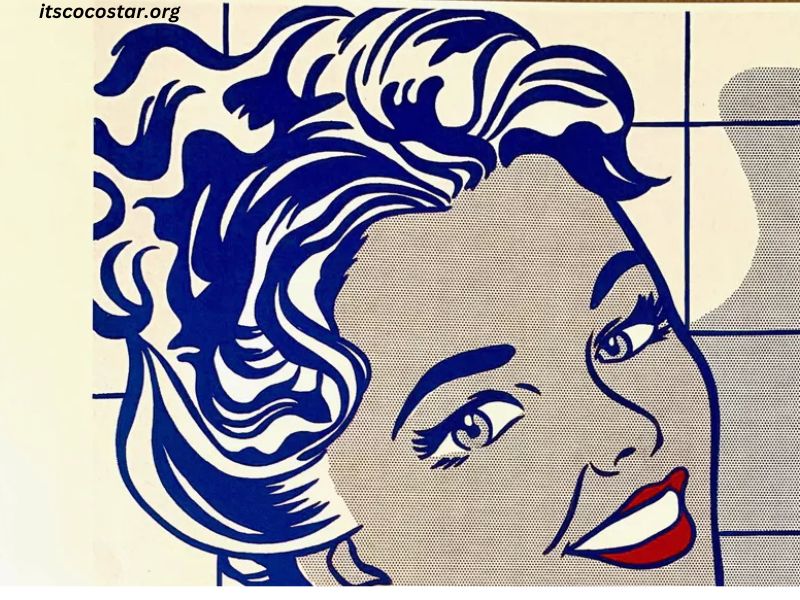Roy Lichtenstein is a name synonymous with the Pop Art movement, forever etched into the history of 20th-century modern art. Known for his comic-inspired paintings and vibrant use of Ben-Day dots, Lichtenstein’s works are instantly recognizable—and endlessly captivating. Among his most celebrated pieces is the “Smiling Pop Art” series, a collection that marries cheeky humor with cultural commentary, all wrapped in playful expressions and bright colors.
This post will guide you through the vibrant world of Roy Lichtenstein’s Smiling Pop Art—exploring its origins, themes, and impact on the art world. Whether you’re an art enthusiast, a pop culture fan, or simply curious, you’ll walk away with a deeper appreciation for Lichtenstein’s work and his enduring legacy.
Understanding Smiling Pop Art
What is Pop Art Anyway?
Before we zoom in on Roy Lichtenstein’s Smiling Pop Art series, let’s first set the stage by exploring the Pop Art movement itself. Emerging in the mid-20th century, Pop Art celebrated everyday objects, mass media, and consumer culture, often blurring the line between high and low art. It was rebellious, witty, and unapologetically vibrant, challenging the traditions of fine art while honoring popular culture.
Key characteristics of Pop Art include bold color palettes, graphic imagery, and the frequent use of repetition. It was art for the masses—accessible, relatable, and full of life. Artists like Andy Warhol, Claes Oldenburg, and, of course, Lichtenstein led the charge, each contributing uniquely to the movement.
The Smile Heard ‘Round the World
The Smiling Pop Art series perfectly embodies everything the Pop Art movement stands for. Lichtenstein’s work featured large, comic-style portraits of people in exaggerated states of happiness. From a crisp, toothy grin to an over-the-top laugh, these works highlighted emotions in a way that felt larger than life—and yet somehow deeply personal.
Central to his technique was Lichtenstein’s use of Ben-Day dots, a printing style borrowed from commercial art and comic books. These dots became his trademark, bathing his pieces in texture and vibrancy. The color palette? Bold reds, yellows, and blues—accentuated with heavy black outlines. Everything about Smiling Pop Art felt lively and dynamic, drawing in viewers and making them feel part of the energy.
But why smiles? Lichtenstein used this most universal expression to offer something more than surface joy. Hidden in these smiles was commentary about societal expectations, consumerism, and even the artificial nature of happiness itself.
The Impact of Lichtenstein’s Work
Redefining Popular Culture
Lichtenstein’s Smiling Pop Art didn’t just make waves in the art world—it redefined how popular culture was represented and consumed as art. By borrowing elements of comic strips, advertisements, and cartoons, he bridged the gap between elite fine art circles and everyday popular imagery. Artists and audiences alike began to rethink what could be considered “art.”
His playful exaggerations called attention to how emotions—and especially happiness—can be commodified. Lichtenstein encouraged viewers to ask themselves, “What are we really smiling about?”
A Legacy of Bold Expression
Decades after its creation, Lichtenstein’s Smiling Pop Art continues to resonate with audiences. Art lovers and modern-day creators alike draw inspiration from the series, incorporating its themes and techniques into everything from advertising design to digital illustrations. And as the conversation around mental health, authenticity, and societal pressures grows, his exploration of symbolic happiness feels more relevant than ever.
Today, his works remain hallmarks in major art institutions worldwide, inspiring new generations to experiment, question, and create.
Engaging with Lichtenstein’s Art
How to Appreciate Smiling Pop Art
Not an art history buff? No worries! Lichtenstein’s work invites viewers of all levels to enjoy it. Here’s how you can deepen your appreciation of his Smiling Pop Art series:
- Look Beyond the Smile: Pay close attention to the exaggerated expressions. What feelings or messages could be hiding beneath the surface?
- Focus on Technique: Notice the Ben-Day dots, bold colors, and clean lines. These aren’t just aesthetic choices—they’re part of Lichtenstein’s dialogue with consumerism and mass culture.
- Have Fun: Above all else, Lichtenstein wanted his work to connect with audiences in a playful, accessible way. Enjoy it for what it is!
Where to See Lichtenstein’s Work
You can engage further with Lichtenstein’s Smiling Pop Art in various ways:
- Museums: View his iconic pieces at institutions like MoMA in New York or Tate Modern in London.
- Online Resources: Platforms like Artsy or museum websites often feature virtual galleries and articles about his work.
- Coffee Table Books: Invest in a beautifully curated book on Lichtenstein—perfect for diving into his art from the comfort of your home!
Why Lichtenstein’s Smile Matters
Roy Lichtenstein’s Smiling Pop Art is more than just visually striking—it’s a cultural touchstone that challenges how we perceive art, emotion, and society. His work reminds us to dig deeper, even when faced with something as seemingly simple as a smile.
But enough about what we think! We’d love to hear your take. Which Lichtenstein piece is your favorite, and how has his work inspired you? Drop us a comment below or tag us in your posts as you explore Smiling Pop Art.






